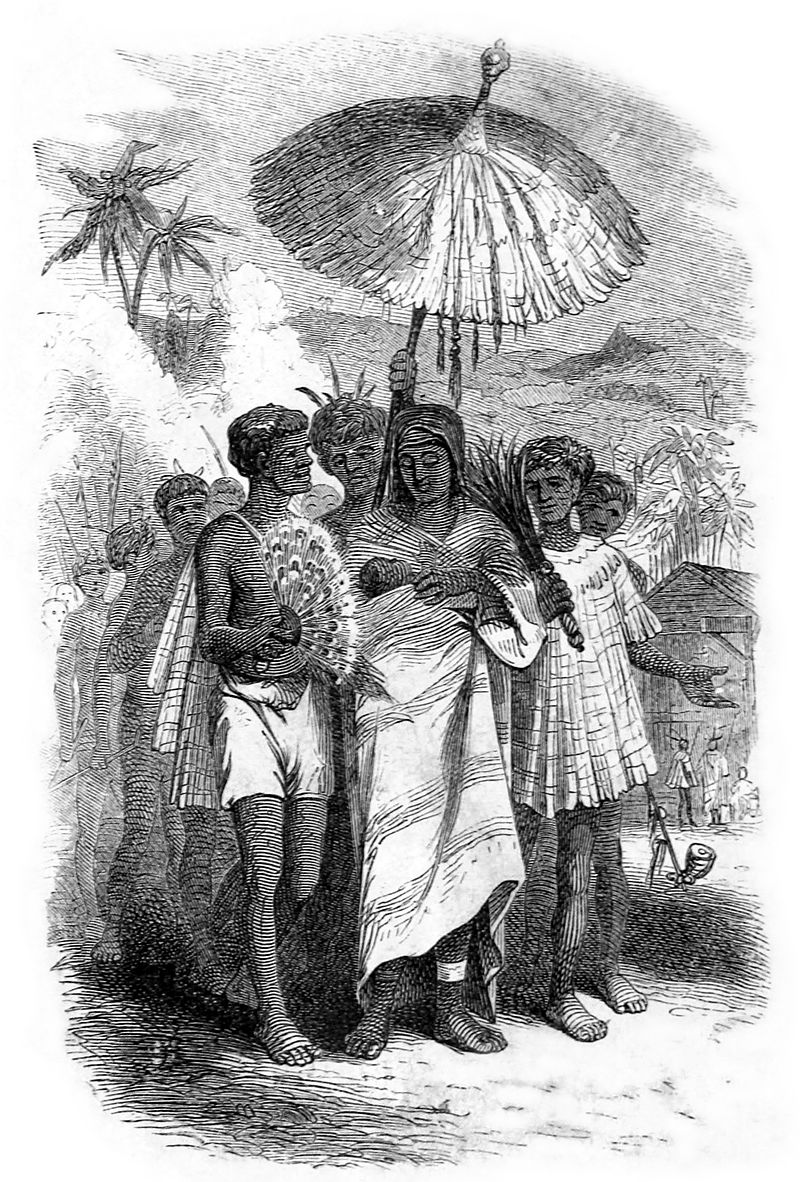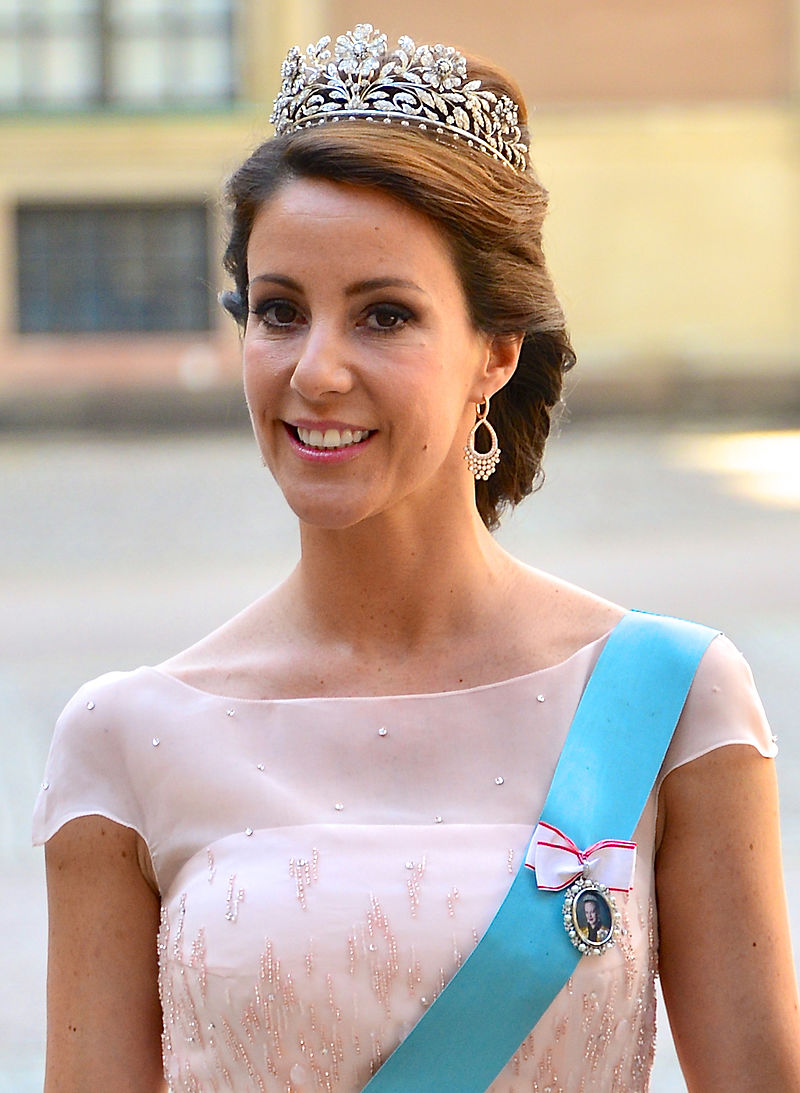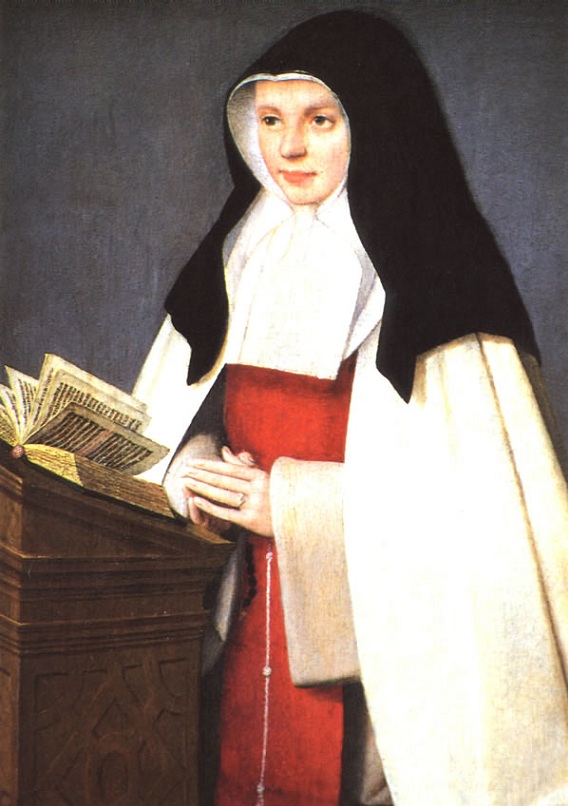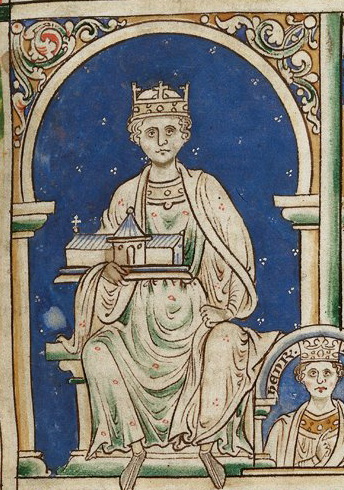© Unofficial Royalty 2024
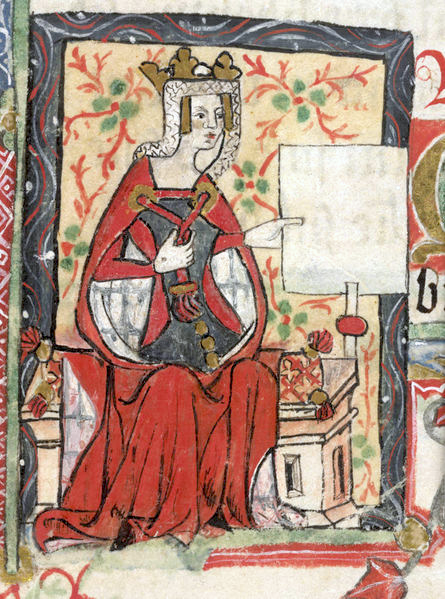
Empress Matilda, Lady of the English; Credit – Wikipedia
February 7, 1102 – Birth of Matilda of England, daughter of King Henry I of England, mother of King Henry II of England, probably at the manor house at Sutton Courtenay in Oxfordshire, England
Matilda was the only surviving child of King Henry I of England after her only sibling William Ætheling died in the tragedy of the sinking of the White Ship. In 1114, Matilda married Heinrich V, Holy Roman Emperor. The marriage was childless and when Heinrich died in 1125, Matilda returned to Normandy where her father held the title Duke of Normandy. In 1128, Matilda married Geoffrey V, Count of Anjou. Matilda and Geoffrey did not get along and their marriage was stormy with frequent, long separations. Matilda insisted on retaining her title of Empress for the rest of her life. The couple had three sons including the future King Henry II of England. On Christmas Day 1126, King Henry I of England had gathered his nobles at Westminster where they swore to recognize Matilda and any future legitimate heir she might have as his successors. However, when Henry I died in 1135, his nephew Stephen of Blois quickly crossed from Boulogne (France) to England, seized power in England, and was crowned King Stephen of England on December 22, 1135. Empress Matilda did not give up her claim to England and Normandy, leading to the long civil war known as The Anarchy between 1135 and 1153. Eventually, Stephen and Matilda’s son Henry agreed upon a negotiated peace, the Treaty of Winchester, in which Stephen recognized Henry as his heir. Stephen died in 1154, and Henry ascended the throne as King Henry II, the first Angevin King of England. Empress Matilda lived long enough to see her son Henry II firmly established on the English throne. She spent the rest of her life in the Duchy of Normandy, often acting as Henry’s representative and presiding over the government of the Duchy of Normandy.
Unofficial Royalty: Empress Matilda, Lady of the English
February 7, 1688 – Birth of Marie Luise of Hesse-Kassel, Princess of Orange, wife of Johan Willem Friso, Prince of Orange, in Kassel, Landgraviate of Hesse, now in Hesse, Germany
When she was 21 years old, Marie Luise’s marriage was arranged by her future mother-in-law Henriëtte Amalia of Anhalt-Dessau who was concerned that her son Johan Willem Friso, Prince of Orange had been almost killed twice in battle and had no heir. Sadly, their marriage lasted only two years. While Johan Willem Friso’s carriage was crossing a river by ferry, the ferry capsized and Johan Willem Friso drowned at the age of 23. At the time of her husband’s death, Marie Luise was pregnant with her second child. Six weeks later, she gave birth to a son who immediately became Willem IV, Prince of Orange. Marie Luise and Johan Willem Friso hold the distinction of being the most recent common ancestors to all currently reigning European monarchs. In addition, they are the ancestors of many former monarchies.
Unofficial Royalty: Marie Luise of Hesse-Kassel, Princess of Orange
February 7, 1693 – Birth of Anna, Empress of All Russia at the Terem Palace in the Moscow Kremlin in Moscow, Russia
Anna was the daughter of Ivan V, Tsar of All Russia and Praskovia Feodorovna Saltykova. Anna had a very short marriage when she and her groom Friedrich Wilhelm, Duke of Courland were both seventeen but Friedrich Wilhelm died two months later and Anna never married again. When 14-year-old Peter II, Emperor of All Russia, grandson of Peter I (the Great), died of smallpox, Anna was chosen to succeed Peter II from the four adult females and one two-year-old male who were candidates for the Russian throne. Anna continued Peter the Great’s Westernization plans including the continued building of St. Petersburg and the canals for seafaring ships and the expansion of the navy. She founded the Cadet Corps, a school for young boys who started at the age of eight being trained for the military. Anna also continued to fund the Russian Academy of Science which Peter the Great had founded to allow for the development of science in Russia. Anna reigned for ten years until her death in 1740.
Unofficial Royalty: Anna I, Empress of All Russia
February 7, 1708 – Birth of Grand Duchess Anna Petrovna of Russia, daughter of Peter I (the Great), Emperor of All Russia, sister of Elizabeth, Empress of All Russia and mother of Peter III, Emperor of All Russia, in Moscow, Russia
Anna Petrovna was one of three of the fourteen children of Peter I (the Great), Emperor of All Russia to survive childhood. In 1725, Anna Petrovna married Karl Friedrich, Duke of Holstein-Gottorp. On February 21, 1728, at Kiel Castle in Kiel, then in the Duchy of Holstein-Gottorp, now in the German state of Schleswig-Holstein, Anna gave birth to a son who was named Karl Peter Ulrich. Sadly, Anna died three months later, on May 4, 1728, at the age of 20. Anna’s son Karl Peter Ulrich succeeded her younger sister Elizabeth, Empress of All Russia as Peter III, Emperor of All Russia. However, the reign of Peter III lasted only six months. He was deposed by his wife, born Princess Sophie of Anhalt-Zerbst, who reigned as Catherine II (the Great), Empress of All Russia.
Unofficial Royalty: Grand Duchess Anna Petrovna of Russia, Duchess of Holstein-Gottorp
February 7, 1837 – Death of the former King Gustav IV Adolf of Sweden in St. Gallen, Switzerland; buried in Riddarholmen Church in Stockholm, Sweden
King Gustav IV Adolf became king at the age of 13 when his father was assassinated and was deposed 17 years later in a coup. In 1797, Gustav IV Adolf married Frederica of Baden and the couple had five children. The occupation of Finland, a territory of Sweden, in 1808 – 1809 by Russian forces was the immediate cause of Gustav Adolf’s overthrow by officers of his own army. Prince Karl, Gustav Adolf’s uncle, agreed to form a provisional government, and the Swedish parliament gave their approval for the coup. Prince Karl was proclaimed King Karl XIII of Sweden on June 6, 1809. In December 1809, Gustav Adolf and his family were sent into exile. Gustav Adolf and his family settled in Frederica’s home country, the Grand Duchy of Baden. However, the couple became incompatible and divorced in 1812. Gustav Adolf ultimately settled in a small hotel in St. Gallen, Switzerland where he lived in great loneliness. On February 7, 1837, Gustav Adolf suffered a stroke and died at the age of 58.
Unofficial Royalty: King Gustav IV Adolf of Sweden
February 7, 1901 – Wedding of Queen Wilhelmina of the Netherlands and Duke Heinrich of Mecklenburg-Schwerin, civilly at the Palace of Justice and religiously at the Grote of Sint-Jacobskerk both in The Hague, The Netherlands
Wilhelmina and Heinrich first met in October 1892, when both were attending the golden anniversary celebrations of Grand Duke Karl Alexander and Grand Duchess Sophie of Saxe-Weimar-Eisenach. Sophie was Wilhelmina’s paternal aunt, and Heinrich’s half-brother was married to one of Sophie’s daughters. Wilhelmina and Heinrich were second cousins once removed, through their mutual descent from Paul I, Emperor of All Russia. They met again in May 1900, when Wilhelmina and her mother traveled to Schloss Schwarzburg in Rudolstadt to meet three prospective grooms for the young Queen. Wilhelmina chose Heinrich, and within a few months, their engagement was announced on October 16, 1900. The wedding, scheduled for February 7, 1901, was overshadowed by the deaths of Wilhelmina’s uncle, Grand Duke Karl Alexander of Saxe-Weimar-Eisenach on January 5, 1901, and Queen Victoria of the United Kingdom on January 22, 1901.
Unofficial Royalty: Wedding of Queen Wilhelmina of the Netherlands and Heinrich of Mecklenburg-Schwerin
February 7, 1908 – Death of Ernst I, Duke of Saxe-Altenburg in Altenburg, Duchy of Saxe-Altenburg, now in Thuringia, Germany; buried in the crypt at the Duchess Agnes Memorial Church in Altenburg, Duchy of Saxe-Altenburg, now in Thuringia, Germany
In 1853, Ernst married Princess Agnes of Anhalt-Dessau. They had two children but only their daughter survived childhood. Ernst I was the longest-reigning Duke of Saxe-Altenburg, reigning from 1853 until 1908. Unlike his predecessors, Ernst left much of the running of the duchy to his ministers, preferring to focus his attention on social issues, and his personal pursuits. However, he remained very active in cultivating the duchy’s relationship with Prussia and the other German states. He joined Prussia in the Austro-Prussian War of 1866, although his forces were never involved in actual battles. For his efforts, he was given a guarantee of independence for Saxe-Altenburg, at a time when Prussia was annexing other territories, including the Kingdom of Hanover. After a reign of nearly 55 years, Ernst I died at the age of 82. on February 7, 1908. As his only son had died in infancy he was succeeded by his nephew, Ernst II, the son of his brother Moritz.
Unofficial Royalty: Ernst I, Duke of Saxe-Altenburg
February 7, 1923 – Birth of George Lascelles, 7th Earl of Harewood, son of Mary, Princess Royal and the first cousin of Queen Elizabeth II, at Chesterfield House in London, England
Full name: George Henry Hubert
The first grandchild of King George V and a first cousin of Queen Elizabeth II, George was the elder of the two sons of Mary, Princess Royal and Henry Lascelles, 6th Earl of Harewood. At the time of his birth, he was sixth in the line of succession, after the four surviving sons of King George V and his mother. During World War II, George served in the British Army with the Grenadier Guards. He was captured by the Germans and held as a prisoner of war. In 1949, George married Marion Stein and they had three children. However, George began a relationship with violinist Patricia Tuckwell. Marion refused to divorce until 1967, by which time George and Patricia had a son. After the divorce, George and Patricia married. However, because their son was born before their marriage, he was not in the line of succession to the throne nor was he eligible to succeed to the Earldom of Harewood. George’s adultery and remarriage made him a social outcast for several years. It was ten years before he was invited to any events by the Royal Family. George had a deep interest in music, especially opera. He was the editor of Opera magazine and director of the Royal Opera House, Covent Garden. He served as chairman of the board and musical director of the English National Opera and artistic director of the Edinburgh, Adelaide, and Leeds Music Festivals. George Lascelles, 7th Earl of Harewood, died on July 11, 2011, at the age of 88.
Unofficial Royalty: George Lascelles, 7th Earl of Harewood
February 7, 1965 – Death of Admiral Perikles Ioannidis, second husband of Princess Maria of Greece and Denmark, in Athens, Greece; buried at the Royal Cemetery at Tatoi Palace in Greece
From 1917 – 1920, the Greek royal family was in exile after Princess Maria’s brother King Constantine I had been forced from the throne due to disagreements with Prime Minister Eleftherios Venizelos. In 1920, Maria returned to Greece when her brother King Constantine I was restored to power. She traveled aboard a Greek destroyer commanded by Admiral Perikles Ioannidis. Maria was determined to marry a Greek and a romance developed. Maria’s first husband Grand Duke George Mikhailovich of Russia had been killed by the Bolsheviks during the Russian Revolution. Perikles and Maria married in 1922 but they had no children. Their marriage did have its issues. Perikles had mistresses and often gave his mistresses jewelry stolen from his wife. Maria lost money playing backgammon and Perikles was forced to carefully monitor their expenses. Maria died of a heart attack in 1940. Perikles spent the remainder of his life devoted to philanthropy and public service. He was president of the Piraeus Yacht Club and a benefactor of the Historical and Ethnological Society of Greece. He bequeathed his collection of photographs and historical items to the Historical and Ethnological Society of Greece and the society’s collection is now housed at the National Historical Museum in Athens. Admiral Perikles Ioannidis survived his wife by twenty-five years, dying at the age of 83.
Unofficial Royalty: Admiral Perikles Ioannidis
February 7, 1999 – Death of King Hussein of Jordan in Amman, Jordan; buried at the Royal Cemetery at Raghadan Palace in Amman, Jordan
King Hussein of Jordan was one of the most important figures in the Middle Eastern region. His efforts for peace in the region earned him the respect of millions around the world, regardless of religious or political beliefs. His father King Talal suffered from mental illness and was forced to abdicate in 1952 after a reign of only one year. The 16-year-old Hussein became King of Jordan with a regency council established until he reached the age of 18. King Hussein had four marriages and a total of eleven children. In July 1998, it was revealed that the King was battling lymphatic cancer, and being treated at the Mayo Clinic in the United States. He returned to Jordan in early January 1999 and somewhat unexpectedly designated his eldest son Abdullah as his successor. After a brief return to the Mayo Clinic for more treatment, the King returned to Jordan for a final time, being taken immediately to the King Hussein Medical Center. Having suffered significant organ failure, he lapsed into a coma, on life-support systems. King Hussein died on the morning of February 7, 1999, with his wife Queen Noor and some of his children at his side.
Unofficial Royalty: King Hussein of Jordan
This article is the intellectual property of Unofficial Royalty and is NOT TO BE COPIED, EDITED, OR POSTED IN ANY FORM ON ANOTHER WEBSITE under any circumstances. It is permissible to use a link that directs to Unofficial Royalty.


